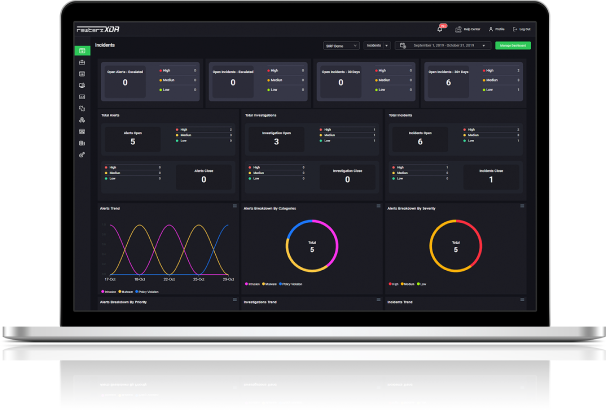
Severity
High
Analysis Summary
Redline Stealer is a type of malware that is used to steal sensitive information from infected systems. The malware was first discovered in 2018 and has been known to target a variety of industries, including finance, retail, healthcare, and technology. The malware is typically spread through phishing emails, fake software downloads, or other forms of social engineering. Once installed on a victim's computer, Redline Stealer can collect a wide range of information, including login credentials, credit card numbers, and other sensitive data.
This stealer is designed to be difficult to detect by traditional antivirus software, and it often uses advanced techniques to evade detection. It can also be used to launch further attacks, such as distributing additional malware or stealing further data.
The malware has been known to target a variety of applications and software, including web browsers, email clients, and messaging applications. It can also capture screenshots and record keystrokes to collect additional information. Redline Stealer has been used in several high-profile cyber attacks and is considered a significant threat to computer security. To protect against Redline Stealer and other types of malware, it is important to practice good cybersecurity hygiene, including regularly updating software and operating systems, using strong passwords, and being cautious when clicking on links or downloading files from unknown sources. It is also recommended to use reputable antivirus and anti-malware software to help detect and remove any infections.
Impact
- Data Exfiltration
- Credential Theft
- Information Theft
- Financial Loss
Indicators of Compromise
MD5
- 09103d2bc74a1c87d41c8efec996846c
- 599cc9d7aac0938d4499e7b7cf98b7f7
- 6d8bd54a5f9b7641f644dad03a53989a
- 1b8902a2d3498cca6997b02276ba838d
- 70186e5bb12262f5359b99944684a8c3
- bcdd296cc18641493dac34103dd0660c
- c236d2037b2b4608a221a5a792e59816
- 9e68098822fb62ba295586efed7d8f48
- 881a161d79f7f13143ff2eada754f50d
SHA-256
- a15c06468627cf710f4003d295feffd6917c363d7cd4c2c1f9aeb7ad83cf8845
- 2f47d439751f469356610fe0caa2ab617e1c2ae7911317309022ee2b4e29f5d9
- b650a59a0c8004f37eac1c016477a2dbf25f3e36f281aa0b512dea2c41b4bbea
- 60f42611d32165af0c6ad6d202bb59a72b6e265adea2a596cb93b4cd271fb251
- 0d5468729396c65ab2118743ec21b0a8b55e651c748ebecbbaa43045782bac1b
- 86b5a3bcb0169d6aaceb8fea508d025c288f7041fd8a61bc302a0cb8e10440e8
- 76a1146953eeb963c6eae47e2c22729d21199ef5d5e2d68f09bee651792d89e7
- 9c0e6f401644a7fe1eabace6fe5e0b10c20c73db7c28b3a3152059e8785d6411
- f8574f1c6914b835e400b43c3acc13e58091d9499dedd7fbc1bb91eb35c16fd3
SHA-1
- db8ba50cb2d7590fd8489dc22fc52c2ba277d85d
- 03a6033ef636fa5bbc624151697590cbbed8027f
- 2058413b7ae138bf17980c53f62f41c70fb509cd
- 9111a975e5e4180774b5f52f733eb50b64e10162
- 5863c818b5988179aa1c64067c73206428dd1493
- 3de16b451e73d40064ea4f38d29ca6eb0b3933d1
- f478eafc6a0cfc655ee6251ae5c252de50f084e7
- 8b21f99837066c4034bd5b6897fc910de0543989
- cc9427aed29fb493f5f802294b9f90c92eba83f0
Remediation
- Block all threat indicators at your respective controls.
- Search for indicators of compromise (IOCs) in your environment utilizing your respective security controls.
- Never trust or open links and attachments received from unknown sources/senders.
- Maintain cyber hygiene by updating your anti-virus software and implementing a patch management lifecycle.
- Patch and upgrade any platforms and software timely and make it into a standard security policy. Prioritize patching known exploited vulnerabilities and zero-days.
- Enable antivirus and anti-malware software and update signature definitions promptly. Using multi-layered protection is necessary to secure vulnerable assets.








